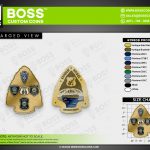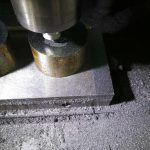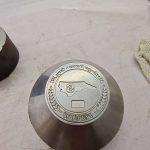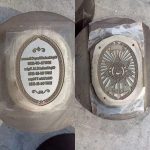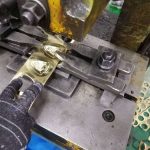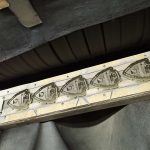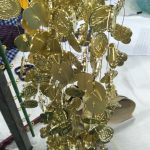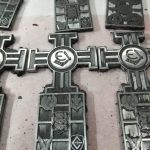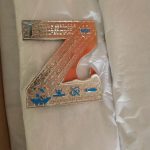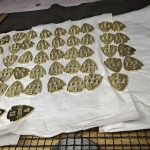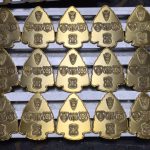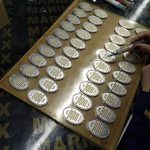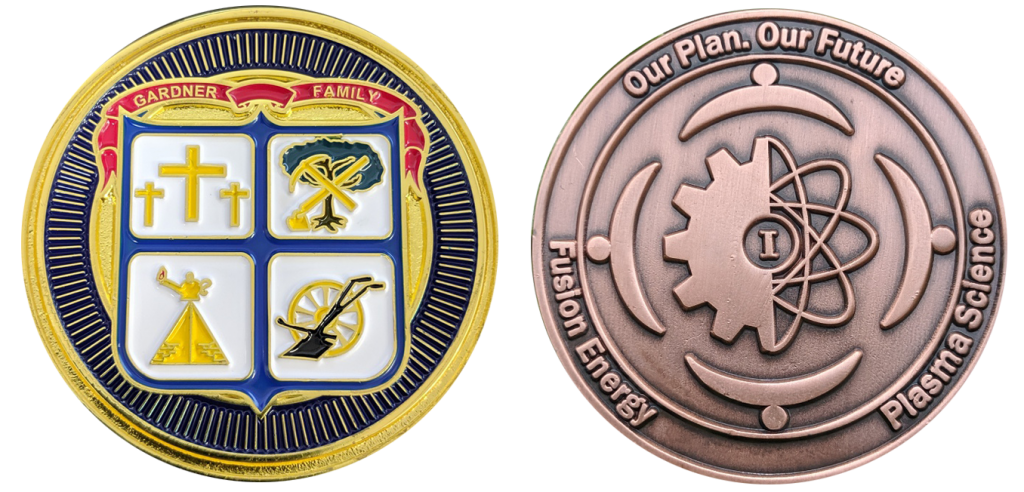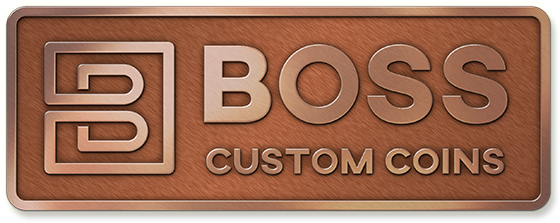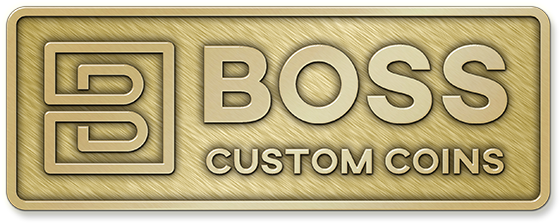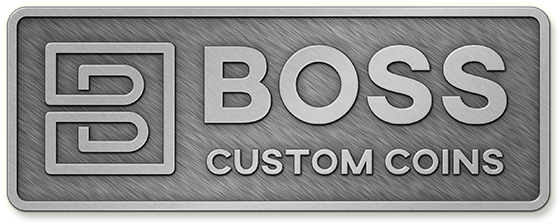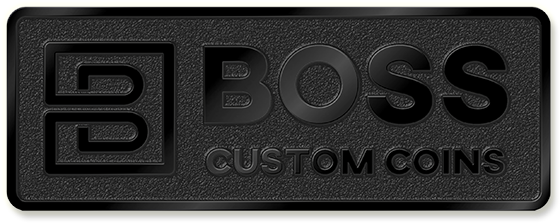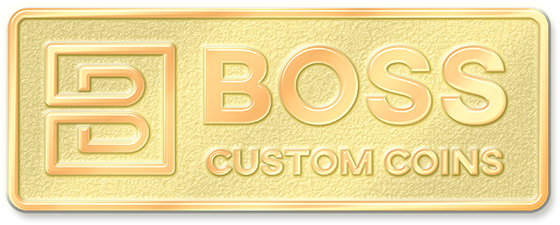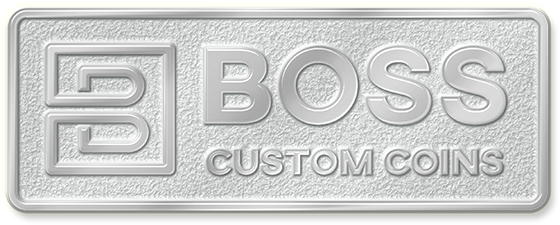State of the Art Manufacturing – The Boss Coins Promise
Quality Guarantee
We want your coins to stand the test of time, just like the memories they hold. At Boss Coins we use state of the art coin manufacturing equipment to make sure every detail, from mold production to plating to enamel filling comes out smoothly on the coin. We use only premium quality materials so you can be sure to expect the very best quality each time.
Our coins are rust proof, scratch resistant and have that jewellery feel you can only get from the very best coin craftsmen. Minting coins is an art that demands time to master. Our manufacturing team is lead by experts with over 20 years of experience in the field.
Challenge Coin Production Gallery
Click on an image to enlarge
Making the mold
The mold is made of high carbon steel. We import the vector art file into the CNC engraving machine program and edit the tool path to engrave the mold. During the mold verification process, we compare the mold to the artwork to make sure it’s perfect before stamping. The mold is then heat-treated to enhance hardness and durability.
Stamping
We install the mold on the workbench of the punching or hydraulic press machine, stamp and transfer the pattern onto the sized strap of metal. At Boss Coins, we always use brass as the base metal, which is the heaviest and most premium metal used for challenge coins. If it’s a complex 3D design that requires melting the metal then we use zinc-alloy, which is around 10% lighter than brass.
Polishing
We then polish the raw coin to remove the punching burrs and improve the smoothness and shine of the coin.
Electroplating
The coins are racked, cleaned, and then plated using electricity to make the plating metals (gold, silver, copper) stick to the raw coin metal (brass or zinc). The plating layer will prevent metal oxidation, improve wear and corrosion resistance, and also enhance aesthetics. When the coins are plated with more than one metal, for example, silver and gold, it’s called dual plating. Dual plated coins go twice through the plating process, once for each metal. We cover the areas that are going to be plated with a different metal manually with tape.
Enamel filling
The enamel colors are mixed and prepared in advance according to the Pantone cards. The coins are then colored with enamel by our high precision machines, or by hand, or a combination of both. After coloring, the coins are baked at high temperatures in the oven to dry and enhance the colorfastness.
The entire process usually takes 2 weeks but we are able to rush coin production to 1 week if necessary, in exceptional circumstances.
Mold Types
Die Cast vs Die Struck Coins
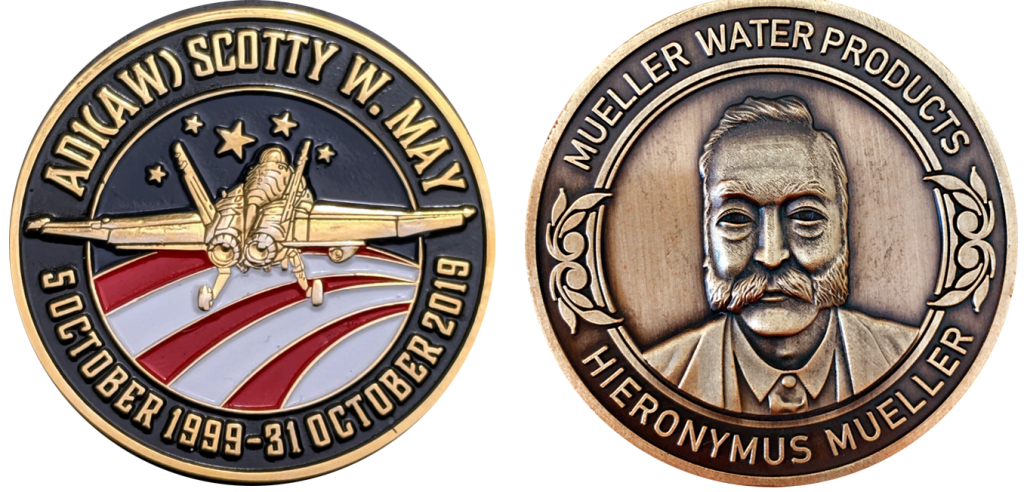
Die casting is the process by which molten metal is poured into a die and left to cool and harden into a coin, medallion or other object shaped by the intricate details of the customised die. It is ideal for portraits and other elaborate images.
Die struck coins are made through the process of force, where a metal press is used to stamp the die onto a raw metal and create the intended design. Die striking is ideal for detailed colourations with enamel and is often preferred in the case of higher quality metals.
Coin Plating Types and Styles
Coin plating offers a variety of metals, styles and finishes to choose from. Metals include gold, silver, nickel, and copper, and come with the option of a high-polished or antique finish — based on your preference for an elegant and shiny coin or a refined matte colour with timeless antique features. Your coin can also be “dual plated”, when more than one type of plating is used on the same coin.
Enamel Types
The difference between hard and soft enamel lies in how the coin is finished. With hard enamel, any recessions left behind after moulding are filled with colour and are polished flush with the surrounding metal. With soft enamel, the coins are not polished and any added colour is left below the level of the raised metal. Other unique enamel finishes can be used in some designs, such as: neon, transparent, glitter and glow in the dark.
Custom Challenge Coin Pricing
The price of your custom challenge coin depends on two key elements in the production process:
Mold Charges
Challenge coin makers rely on the same process used in the creation of currency coins, which all starts with the mold design. Because each mold is unique and requires detailed craftsmanship to develop, a mold fee applies to each new design in the coin-making process. Mold fees vary by coin size, shape, and other features, such as 3D elements and designs. We keep every mold in our files for 2 years.
Price per Coin
The price per coin is calculated separately from the mould fee, and will depend on the coin’s size, complexity, and optional details. For example, the number of enamel colours, enamel filling areas and sizes, and the presence of 3D elements and custom shape edges which may include numbering, engraving and picture inserts will all be taken into consideration when calculating the price per coin.
Coin Extras
Finally, serial numbers or customised names can be added elsewhere on the coin. The coin’s edge, aka “the third side of the coin”, is a great space to add lettering, numbers, and custom designs for an even more unique look. Edges can be engraved by hand-carving, with a laser, or moulded onto the coin during the casting process.
You can also turn your coin into a bottle opener, a keychain, make it into a pin or a magnet. Anything is possible. At Boss Coins, we love the challenge of producing complex coins which can be added to your collection of timeless pieces, serve as a wonderful gift coin or even find its own special place in history.
